“Valentine’s Day was a holiday invented in cold, bleak February to give New Year’s dieters hope and a much needed chocolate reprieve.” — my Mom 🙂
Regular vs. Dutch Process Cocoa
I’m sure you’ve been reading through a recipe at some point in your life, when you come across the bewitching phrase, “Dutch Process Cocoa.”
You picture your cocoa wearing wooden shoes, yodeling amidst the tulips. Wait– do Dutch people yodel? Eeeek I can’t remember who yodels. But anyway, Dutch Process Cocoa is not like that. (Which means it doesn’t matter if I know what particular breed of people YODEL, thank you very much. Why are you looking at me like that. . . ?).
Well I guess the Dutch did play a little role in Dutch Process Cocoa, because it was originally a Dutch chocolate maker (hey ladies– a man who brings you chocolate AND tulips? Yes please!) who invented how to do this back in the 1800s. But really, all that we need to remember is what the heck is the difference between regular and Dutch Processed Cocoa? Because at the end of the day, all that really matters is my brownies. Yes, my friends. My brownies matter very much. So let’s take a quick look at these different kinds of cocoa so that we can do a little less mystical “I wonder what THIS does!!!” (*explosion in the background*) and a little more eating of chocolate. Ok a lot more. Chocolate eating, that is– not exploding.
What are we waiting for? Let’s do this!
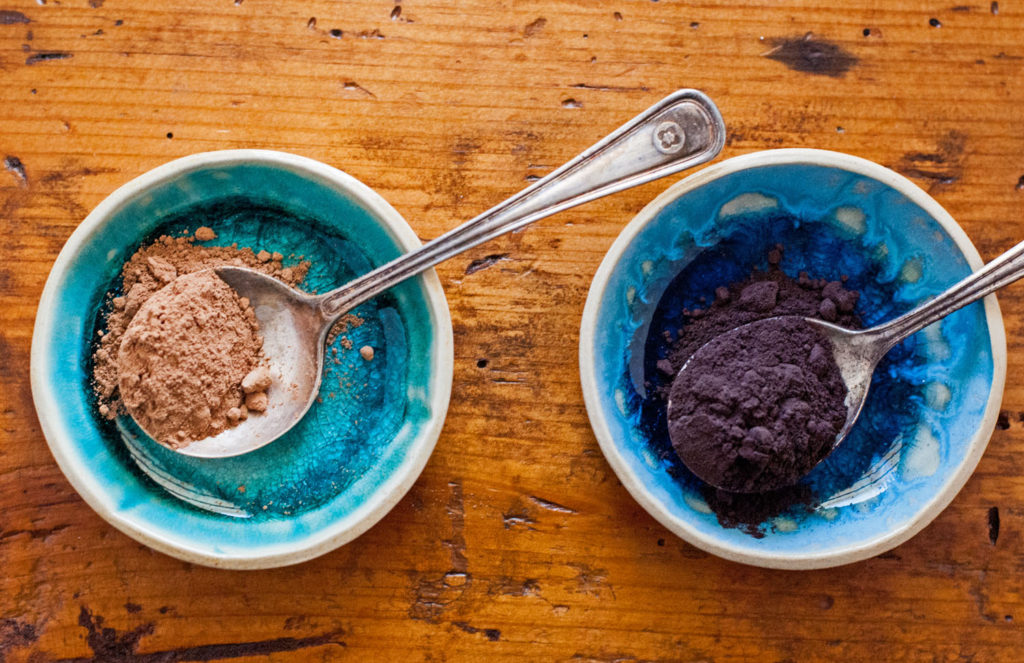
Well, the first thing that I want to tell you about Cocoa teams Regular vs. Dutch is that they are VERY different colors. Can you guess which one is which? *Jeopardy music plays in background*
You are CORRECT!!!! (Hey, if Dora can blink happily and call a non answer correct, then I can too).
The one on the left is regular, and the one on the right is Dutch process.
Um . . . how come the Dutchman looks like he spent a little too much time embroiling himself like a senior citizen on a Florida beach? I’m so very glad you asked.
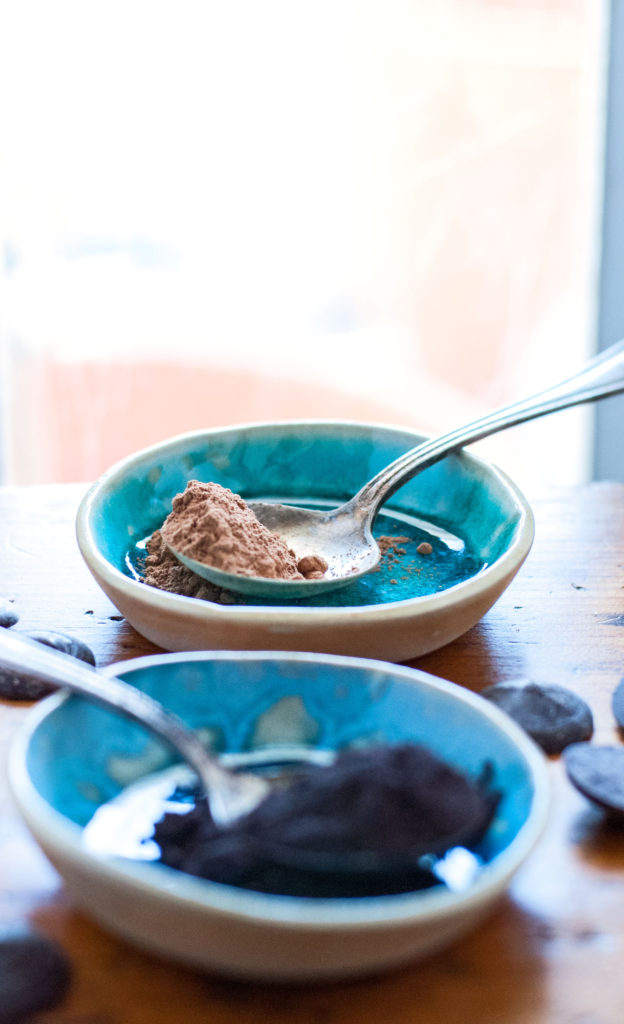
You see, cocoa in its natural state is kind of acidic. You would never think such a beautiful, sweet little thing such as chocolate could have a lash of acidity, would you? Chocolate is like the great first date that you take to dinner and then realize that she is rude to the waiter. It is the fantastic house you buy, only to find out when it rains that the former owners kept a (very wet) dog (often) inside. Acidity in chocolate is the little sting of unpleasantness in what is otherwise a practically flawless specimen of perfection.
Now don’t get me wrong. There are plenty of acidic foods out there that are made FANTASTIC by their acidity. Lemon? Yogurt? Um, hello COFFEEEEEE???? Being acidic is not, in and of itself, a bad thing. So why can acidity be a bad thing in chocolate?
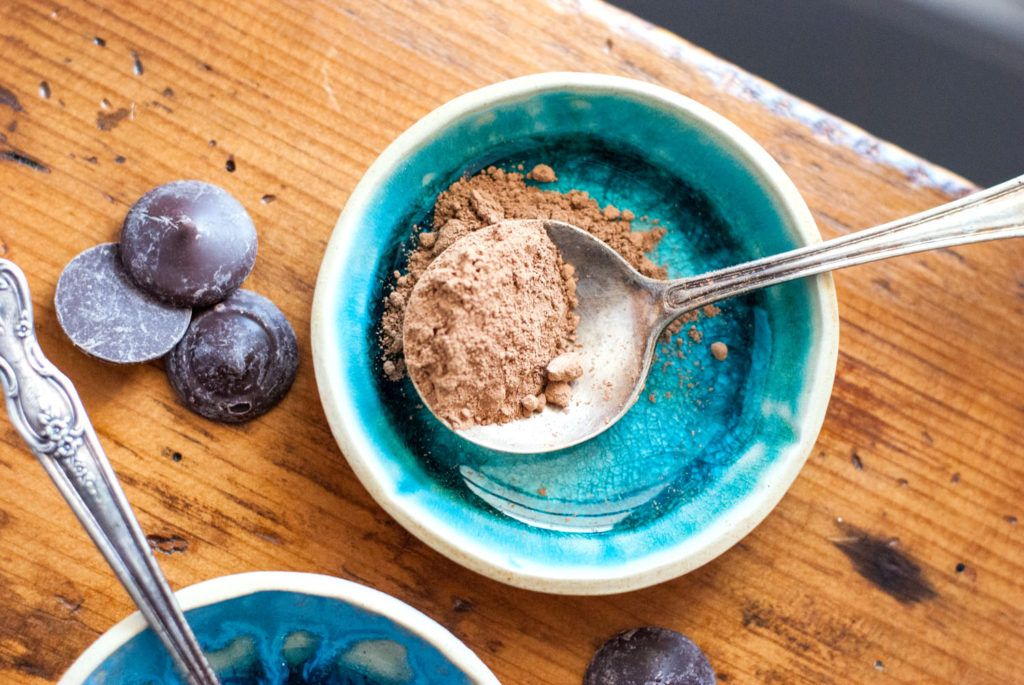
Well, some people don’t mind the acidity. Some people (I’m looking in the mirror here) have never yet met a chocolate bar they didn’t like. Some people will eat white, milk, dark, and every other kind of chocolate in between (which chocolate isn’t really quite chocolate but that’s another discussion for another day).
The thing is, you might not even notice the acidity in regular cocoa. But you will notice the effects of it in your baked goods. Ingredients high in acid react with leaveners like baking soda. The acid/baking soda reaction is like your classic “Add vinegar to the baking soda playdough volcano and watch it explode” experiment. Some people mistakenly believe you can substitute any kind of cocoa in any recipe you want. But if you take regular (acidic) cocoa out, then know that your baking soda will probably have to be switched over (at least in part) to baking powder, if you want your dessert to rise.
Regular cocoa has a somewhat more fruity, simple flavor. The acid in it sometimes causes a little bit of a grainy, bitter taste. Again, lots of people (myself included) don’t mind this enough to quit using it. But if you’ve ever made, say, hot chocolate and you get that weird, bitter, almost “dusty” taste in your mouth, the acidic regular cocoa could have been the culprit.
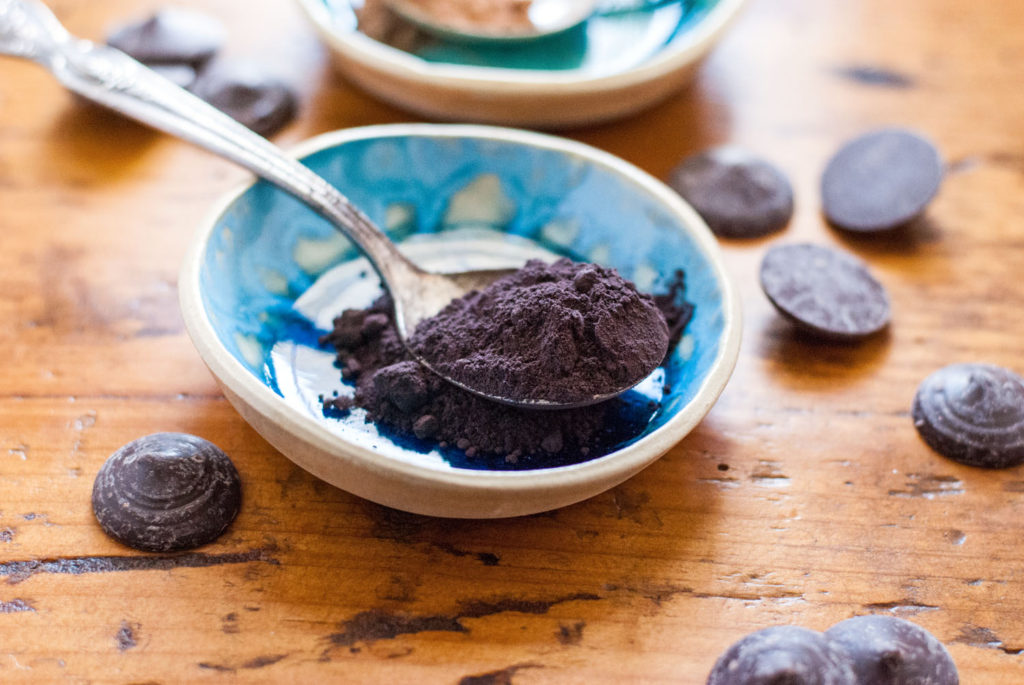
Dutch Process cocoa has been processed with an alkaline solution (usually a potassium wash while the beans are still whole) to neutralize the acidity. The alkaline process not only reduces the acid, but it also darkens the color.
Interestingly, though, not all cocoa is “dutched” the same amount. Therefore, if the beans undergo less of the alkaline wash, they retain a little bit of acidity and don’t get as dark. The darkest cocoas are pretty much black– they have been heavily dutched, with nearly all of their acidity removed, rendering them a deep, beautiful ebony color.
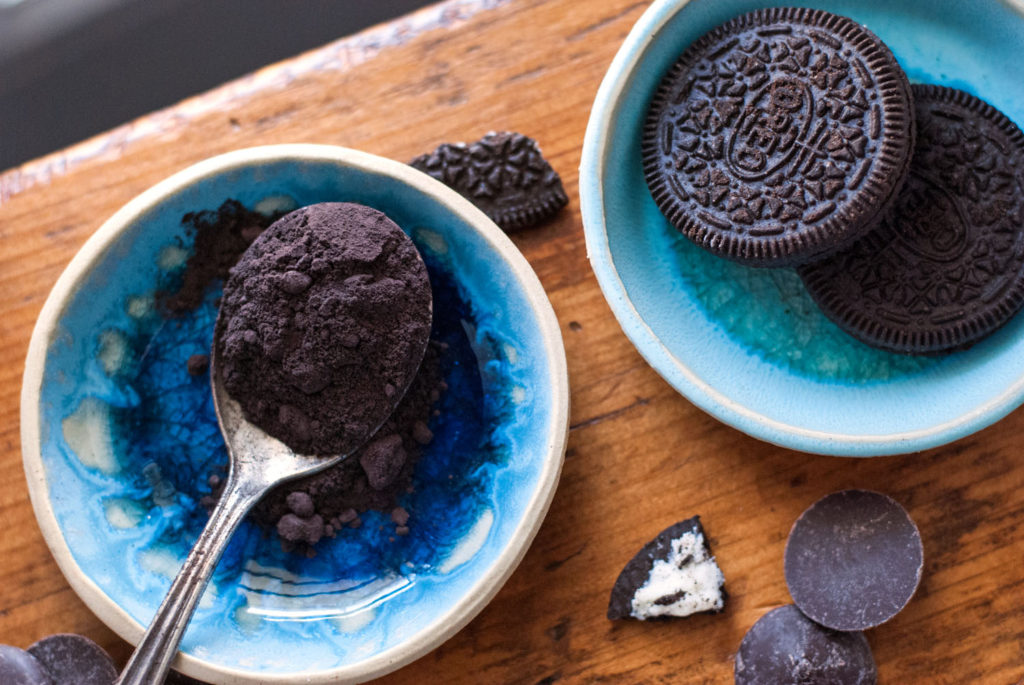
And yes, black cocoa is what gives Oreos their distinctive black color.
The darker the cocoa, the more complex– and “darker”– the taste. Now, up above we said that regular cocoa could get bitter. Ironically, at the super dark end, cocoa gets a little bitter at times, as well. It’s almost like there is that perfect sweet spot somewhere in the middle, and only you can determine where your personal “chocolate nirvana” rests. Personally, I love dark chocolate. But even I admit that the darker the chocolate, the more bitter it becomes. It’s all up to your personal taste.
Black cocoa is generally combined with another type of cocoa (some people do half and half with regular cocoa in recipes, and some do half and half with another, lighter version of Dutch Process cocoa. Mixing cocoas just helps to temper the bitterness of the super dark kind a little bit. Again, though, that’s your choice. When I did my super dark Death by Chocolate Brownies, I used straight up black cocoa and never looked back. And wheweeeee were they dark and rich! Even a single bite was enough. And that’s the way I love my chocolate desserts to be– so decadent that a single bite feels like a feast for all the senses. PS– it’s easier to eat less that way, too, because the taste is so rich that a few bites is enough.
So figure out where your sweet spot is– both literally and figuratively, and don’t be afraid to mix up the two kinds of cocoa to get the perfect flavor profile and darkness level that you want.
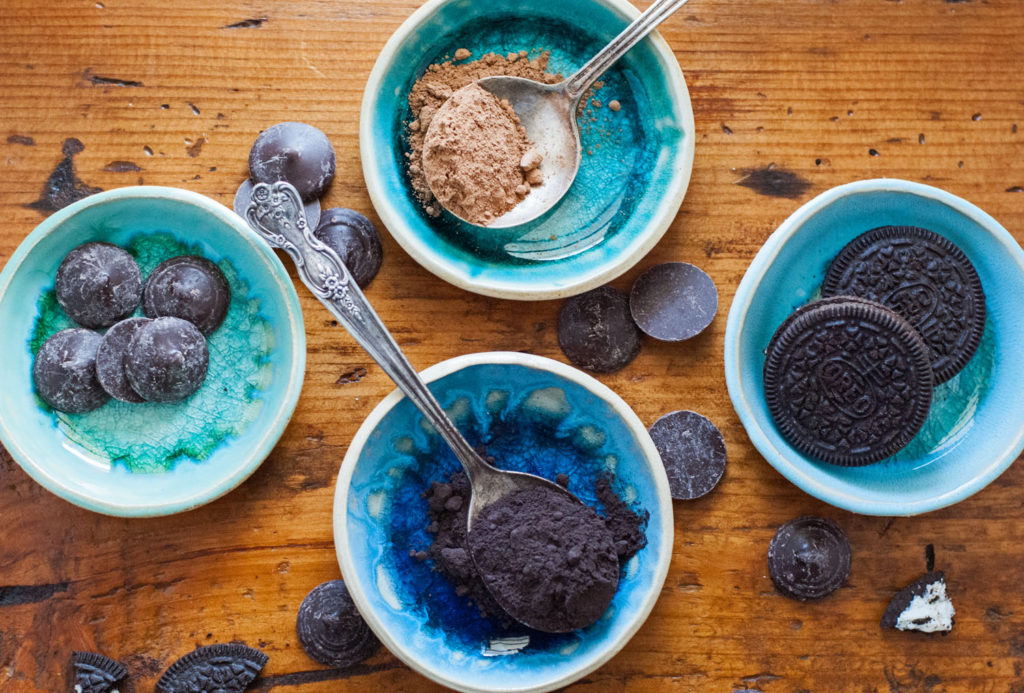
NOW with that being said, getting your favorite cocoa flavor is only half the battle. There are a lot of different cocoas out there, and as we said above (and as you remembered because you are a brilliant student and receive an A plus for today), baking soda will react only with acidic ingredients.
All this means is that if your recipe calls for regular cocoa and shows baking soda as a leavener, you will need to adjust that to baking powder if you swap out Dutch Process cocoa for the called for regular cocoa.
Confused yet?
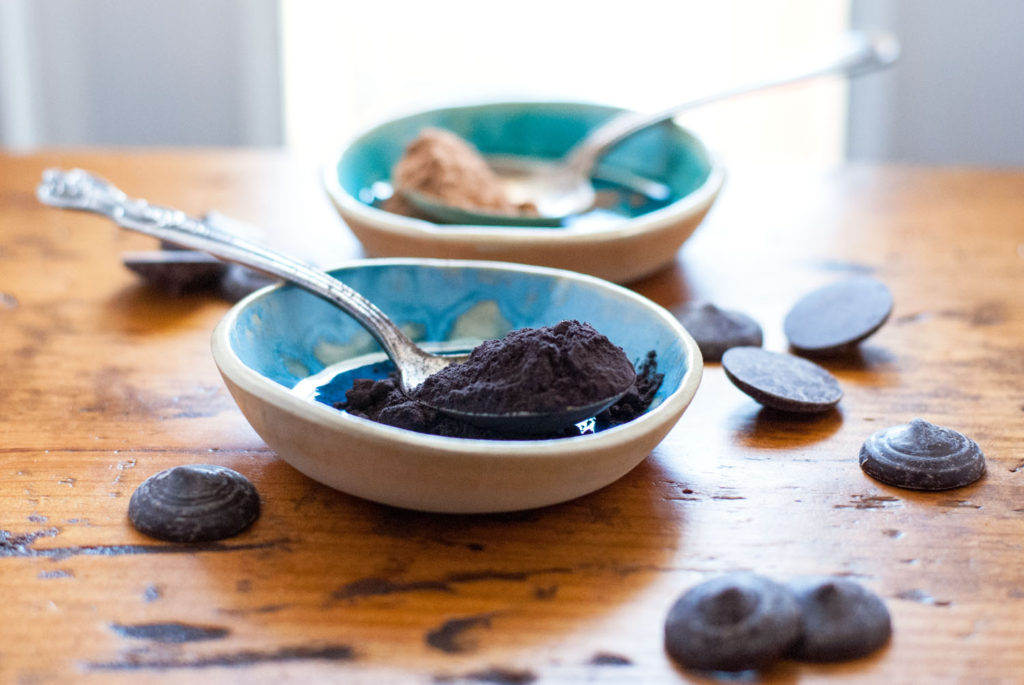
Well here is a stupid way to remember it.
Dutch Process. Think of the Dutch. They are happy and never fight with anyone. They are tulips and happiness. They don’t do the volcano experiment. They don’t react with baking soda like the vinegar does. I need nice, soft baking powder to make me happy when I rise.
Regular cocoa. Fight fight fight me for my chocolate! Hiss fizz bzzzzz. Volcano! I will react with baking soda and make your delicious baked goods rise.
There. Stupid, but how stupid was “My very excellent memory just served up nine planets” to remember the planets, of which poor Pluto has now been deprived? It might help you remember, even if it’s silly.
Dutch/Tulips=chill. Use soft, kind baking powder.
Chocolate=fight me for it. Use baking soda. Fizz fizz volcano. Fight.

And at the end of the day, if you honestly can’t remember which is which, there’s always the internet.
All that really matters is, do you like the chocolate you’re eating?

And personally, I can’t imagine that the answer to that question would be anything but . . .
HECKKKKK YES!
You did it. And I’m just so proud of you.

Disclosure: This post may contain affiliate links, which just means that we get a few pennies if you purchase through our link. I never recommend products that I don't personally use and love. Thanks!
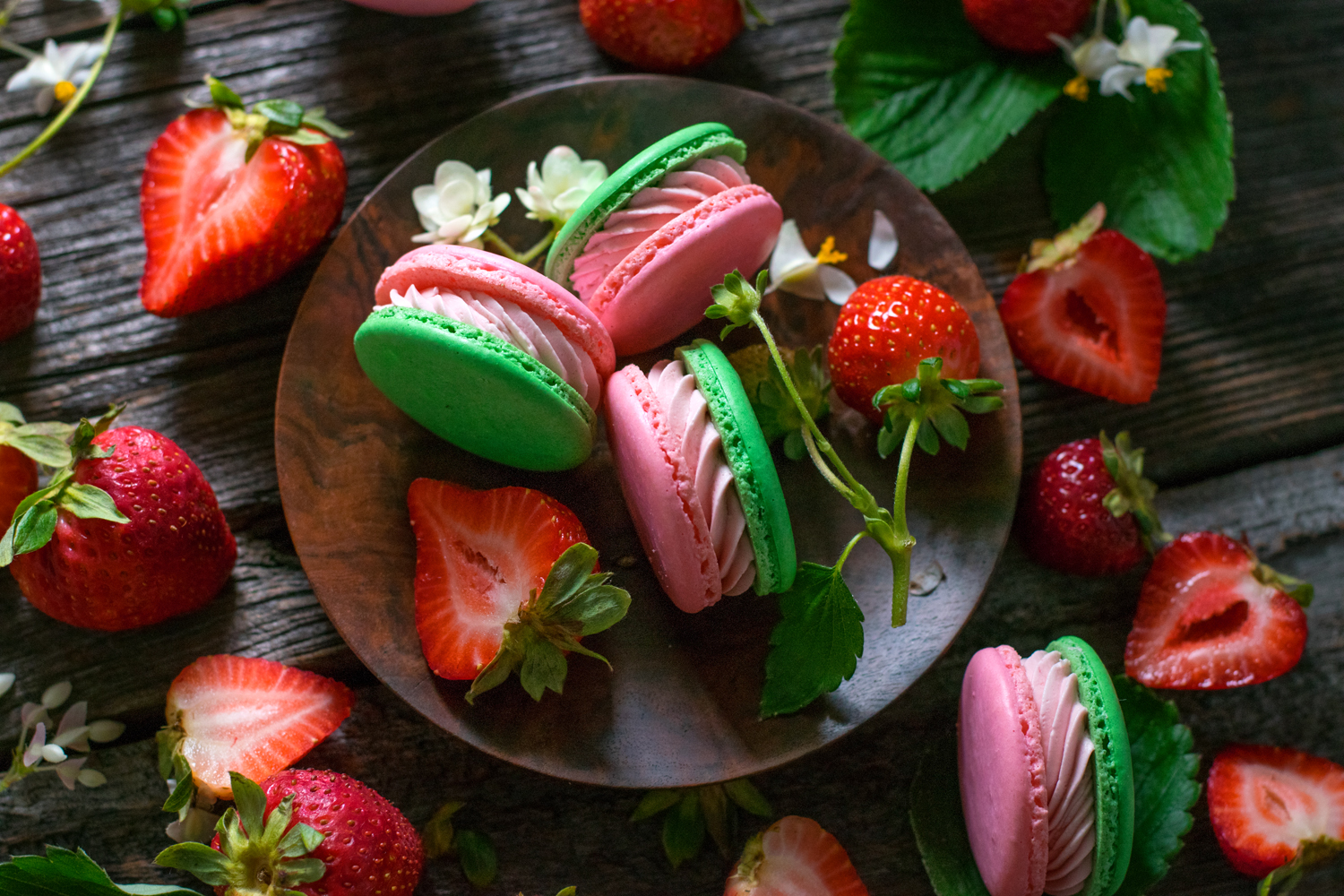


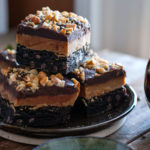
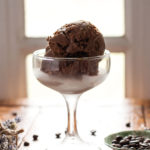



I’m one of those people that mix my cocoa. Hall black and half regular. That’s my sweet spot. Very informative article. Much enjoyed reading it.
What an awesome idea!
Love seeing my ceramics in your beautiful photos and knowing they are used for making these delicious food 🙂 Thank you!
🙂